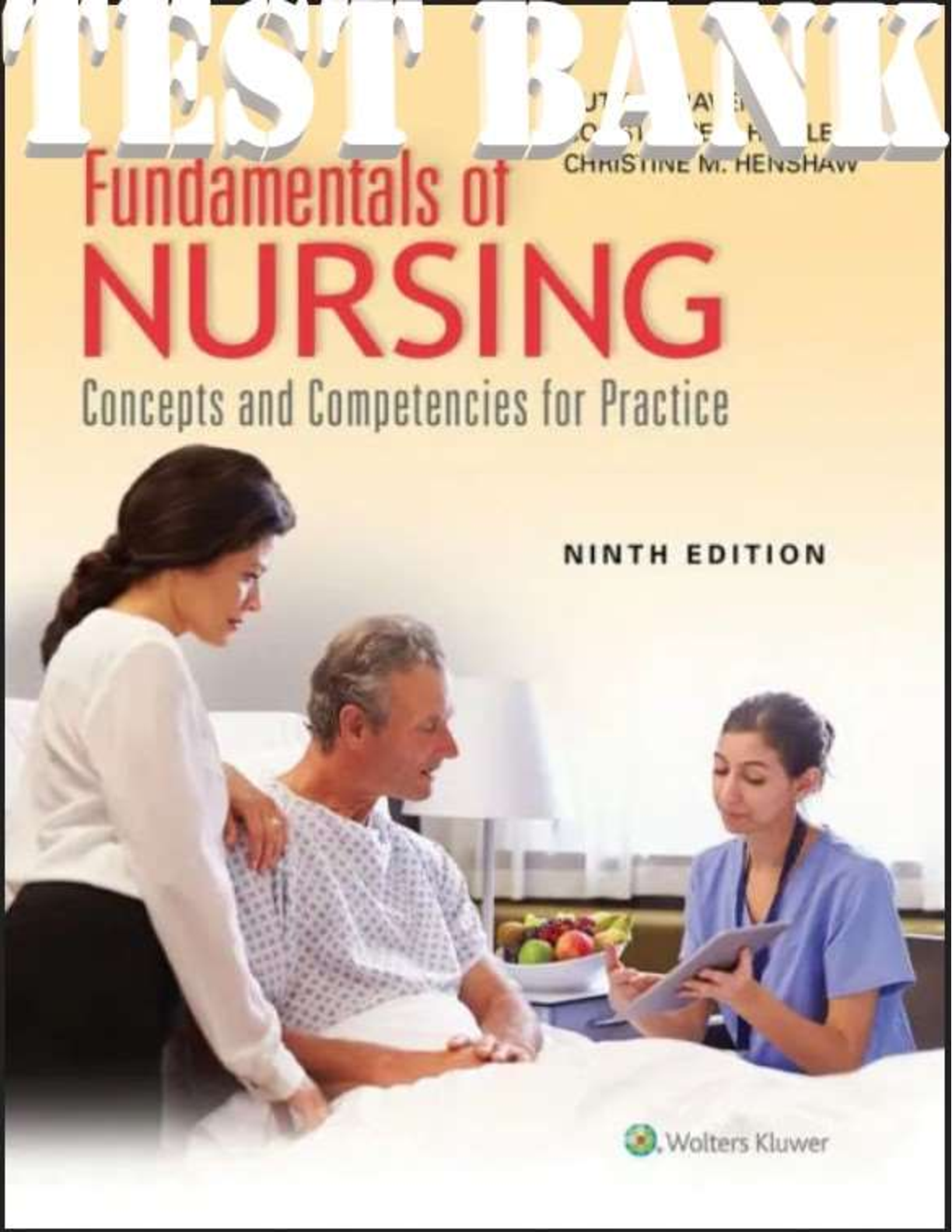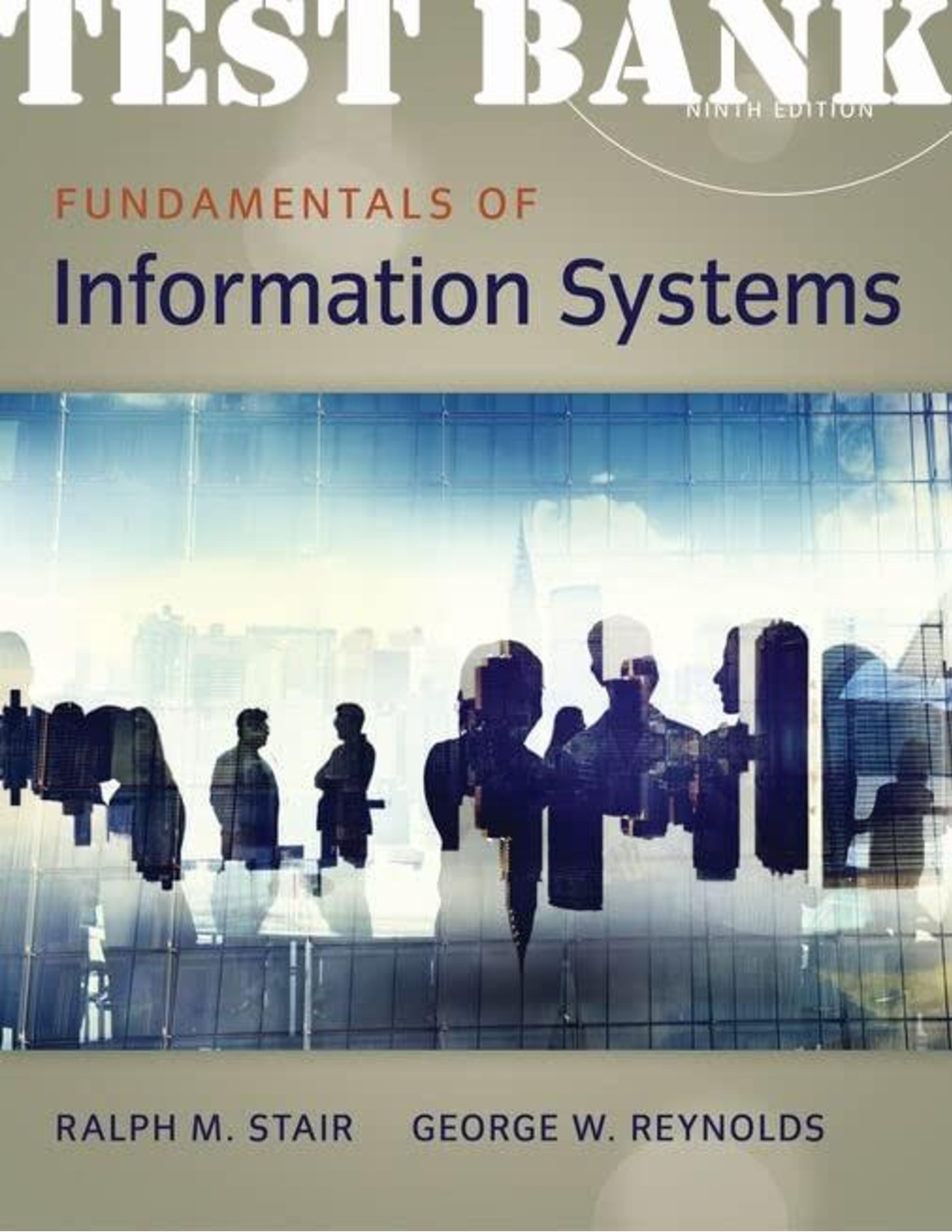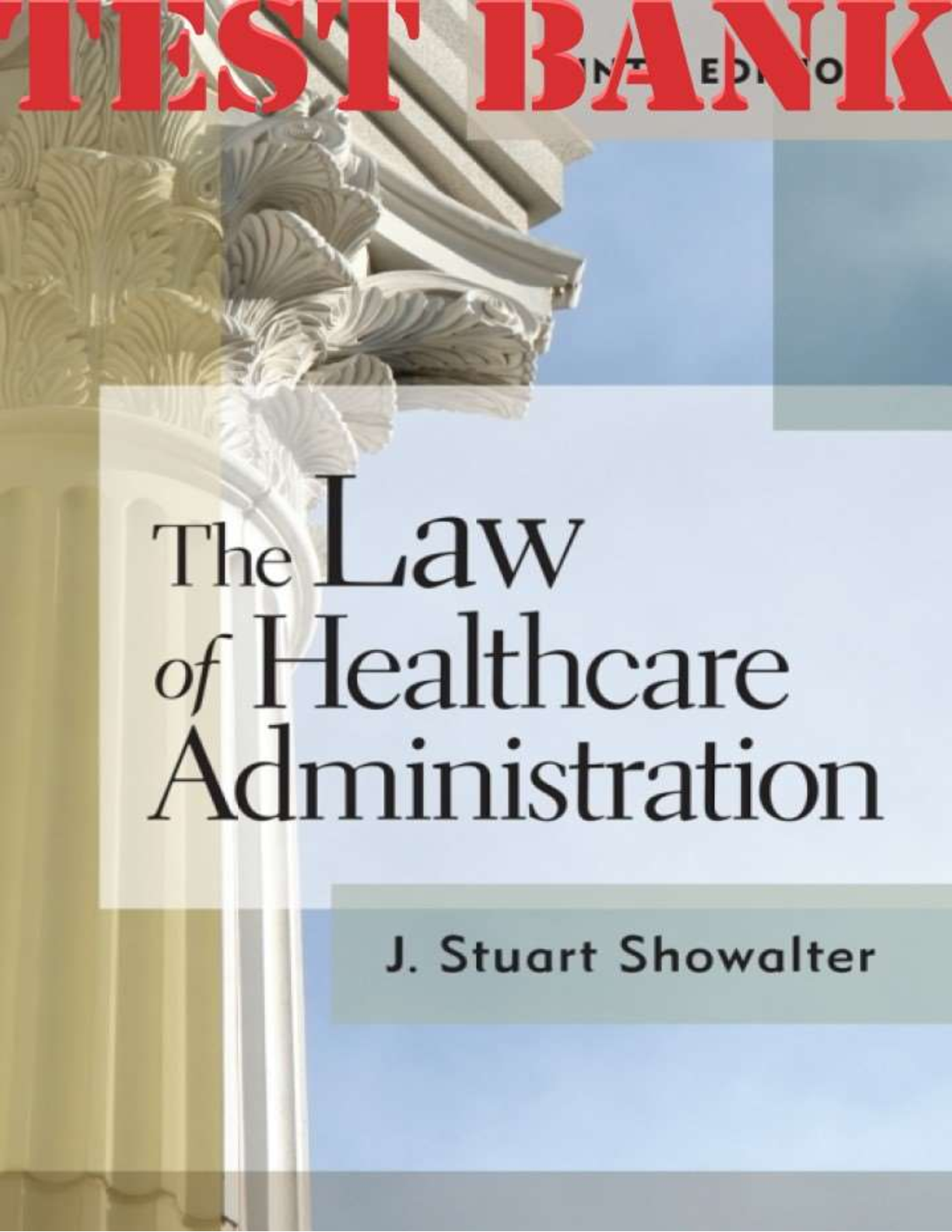Economics > TEST BANKS > Test Bank For Managerial Economics, 9th Edition by William F. Samuelson, Stephen G. Marks, Jay L. Za (All)
Test Bank For Managerial Economics, 9th Edition by William F. Samuelson, Stephen G. Marks, Jay L. Zagorsky
Document Content and Description Below
Test Bank For Managerial Economics, 9th Edition by William F. Samuelson, Stephen G. Marks, Jay L. Zagorsky-1. Managerial economics can best be defined as the: a) macroeconomics and microeconomics for... managers. b) study of economic incentives on consumer behavior and demand. c) analysis of the labor market through the behavior of workers and managers. d) analysis of major management decisions using economic tools. e) study of the strategic interaction between firms in a market. ANSWER: d SECTION REFERENCE: Introduction DIFFICULTY LEVEL: Easy 2. Which of the following is not one of the steps in managerial decision making? a) Predicting the consequences of a decision. b) Exploring the alternatives to the decision. c) Defining the problem and the objectives of the decision. d) Negotiating a consensus to implement the decision. e) Performing sensitivity analysis. ANSWER: d SECTION REFERENCE: Six Steps to Decision Making DIFFICULTY LEVEL: Easy 3. Profit maximization is an ambiguous guide to decision making in the private sector because: a) firms in the private sector usually do not aim at profit maximization. b) the goal of profit maximization contradicts the goal of satisfying the firm‘s shareholders. c) of the presence of risk and uncertainty. d) profit-maximization ignores social costs and benefits. e) None of the above answers is correct. ANSWER: c SECTION REFERENCE: Six Steps to Decision Making DIFFICULTY LEVEL: Easy 1-2 4. Which of the following is true of economic models? a) Models are too theoretical to be applicable in real world decisions. b) Models are not useful because uncertainty prevents accurate forecasts. c) Models are simplified descriptions of processes, relationships, or other phenomena. d) Models describe real world situations in complete detail. e) Models are not useful because they do not take into account complicating and less important features of a problem. ANSWER: c SECTION REFERENCE: Six Steps to Decision Making DIFFICULTY LEVEL: Medium 5. Which of the following correctly describes a deterministic economic model? a) A deterministic model is a model for which the outcome is predicted with certainty. b) A deterministic model can only be used to explain short-run economic phenomena. c) A deterministic model is most useful in identifying long-term trends. d) A deterministic model is used in the study of normative economics. e) The outcome of a deterministic model is random and has probabilities attached. ANSWER: a SECTION REFERENCE: Six Steps to Decision Making DIFFICULTY LEVEL: Easy 6. Which of the following correctly explains a probabilistic model? a) A probabilistic model gives a description of real world economic phenomena. b) A probabilistic model shows the possibility of a range of outcomes. c) A probabilistic model examines the changes in economic variables over a period of time. d) A probabilistic model is based on value judgments. e) A probabilistic model is used to explain long-run economic phenomena ANSWER: b SECTION REFERENCE: Six Steps to Decision Making DIFFICULTY LEVEL: Easy 7. Maximizing profit by enumerating the profit outcomes of different courses of action a) Is only applicable to problems with a small number of alternatives. b) Becomes increasingly costly as the number of choices increase. c) Always discovers the best possible choice. 1-3 d) Provides a useful shortcut to finding the optimal choice. e) Answers b and c are both correct. ANSWER: b SECTION REFERENCE: Six Steps to Decision Making DIFFICULTY LEVEL: Medium 8. A beverages company wants to launch a new diet soda aimed at diabetics and healthconscious customers. It will use a economic model to identify its target customers. a) deterministic b) dynamic c) qualitative d) stochastic e) probabilistic ANSWER: a SECTION REFERENCE: Six Steps to Decision Making DIFFICULTY LEVEL: Medium 9. Given that the market share of a firm depends on many unpredictable factors, a firm will use a economic model to estimate the market share for one of its products. a) deterministic b) dynamic c) qualitative d) probabilistic e) comparative statics ANSWER: d SECTION REFERENCE: Six Steps to Decision Making DIFFICULTY LEVEL: Medium 10. Sensitivity analysis is used by a firm to: a) analyze the impact of a change in the price of the good on the demand for the good. b) examine the static effects of an economic decision on the firm‘s profitability. c) analyze the social costs and benefits of an economic decision. d) examine the opportunity costs of an economic decision. e) examine how an optimal decision is affected if key economic facts vary. ANSWER: e SECTION REFERENCE: Six Steps to Decision Making 1-4 DIFFICULTY LEVEL: Easy 11. A cosmetics company is conducting a second-year review of one of its newest products. The marketing department expects that the firm will continue to earn profits from the sale of the product in the third year as it did in the past two years. Senior management, however, feels that the profit projections would vary based on other factors such as the price of the competitor's products, the actual level of sales, and the possibility of cost reductions. In other words, the senior management is undertaking . a) a sensitivity analysis b) an enumeration study c) a benefit-cost analysis d) a contingent valuation study e) a strategic analysis ANSWER: a SECTION REFERENCE: Six Steps to Decision Making DIFFICULTY LEVEL: Medium 12. According to the satisficing model of management behavior, the goal of a firm is to: a) satisfy customers, employees, and shareholders. b) maximize the gain to society and not just to shareholders. c) achieve a satisfactory level of performance against a benchmark. d) maximize sales revenue and not necessarily the value of the firm. e) maximize its market share even at the cost of profit. ANSWER: c SECTION REFERENCE: Private and Public Decisions: An Economic View DIFFICULTY LEVEL: Easy 13. According to the theory of the firm, the management‘s ultimate objective is to: a) maximize short-term profit, even if this sacrifices long-term profit. b) maximize the value of the firm. c) increase production to the highest possible level. d) increase the market share of the firm. e) diversify into as many product lines as the firm can. ANSWER: b SECTION REFERENCE: Private and Public Decisions: An Economic View DIFFICULTY LEVEL: Easy [Show More]
Last updated: 6 months ago
Preview 5 out of 319 pages

Loading document previews ...
Buy this document to get the full access instantly
Instant Download Access after purchase
Buy NowInstant download
We Accept:

Reviews( 0 )
$16.50
Can't find what you want? Try our AI powered Search
Document information
Connected school, study & course
About the document
Uploaded On
Jan 29, 2025
Number of pages
319
Written in
Additional information
This document has been written for:
Uploaded
Jan 29, 2025
Downloads
0
Views
21

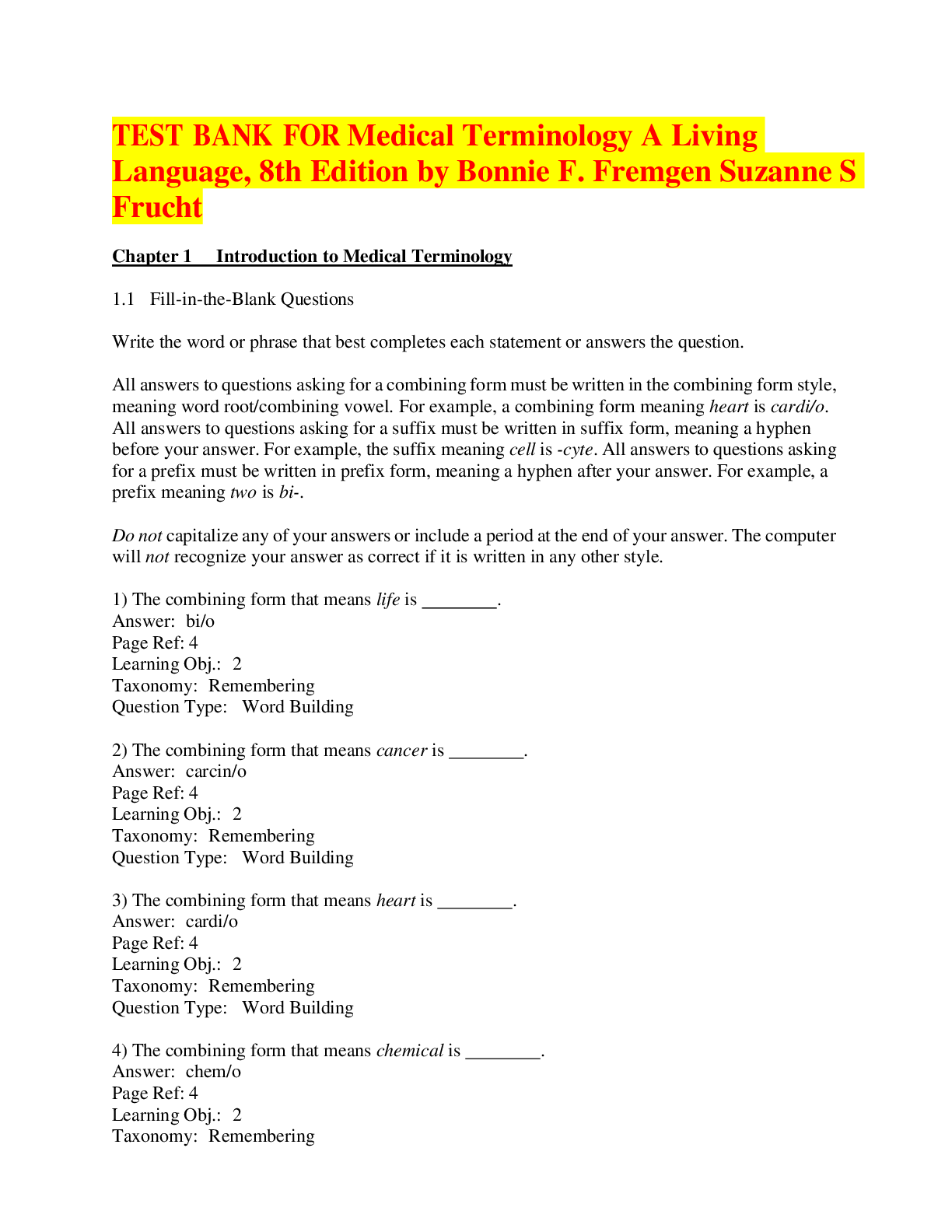
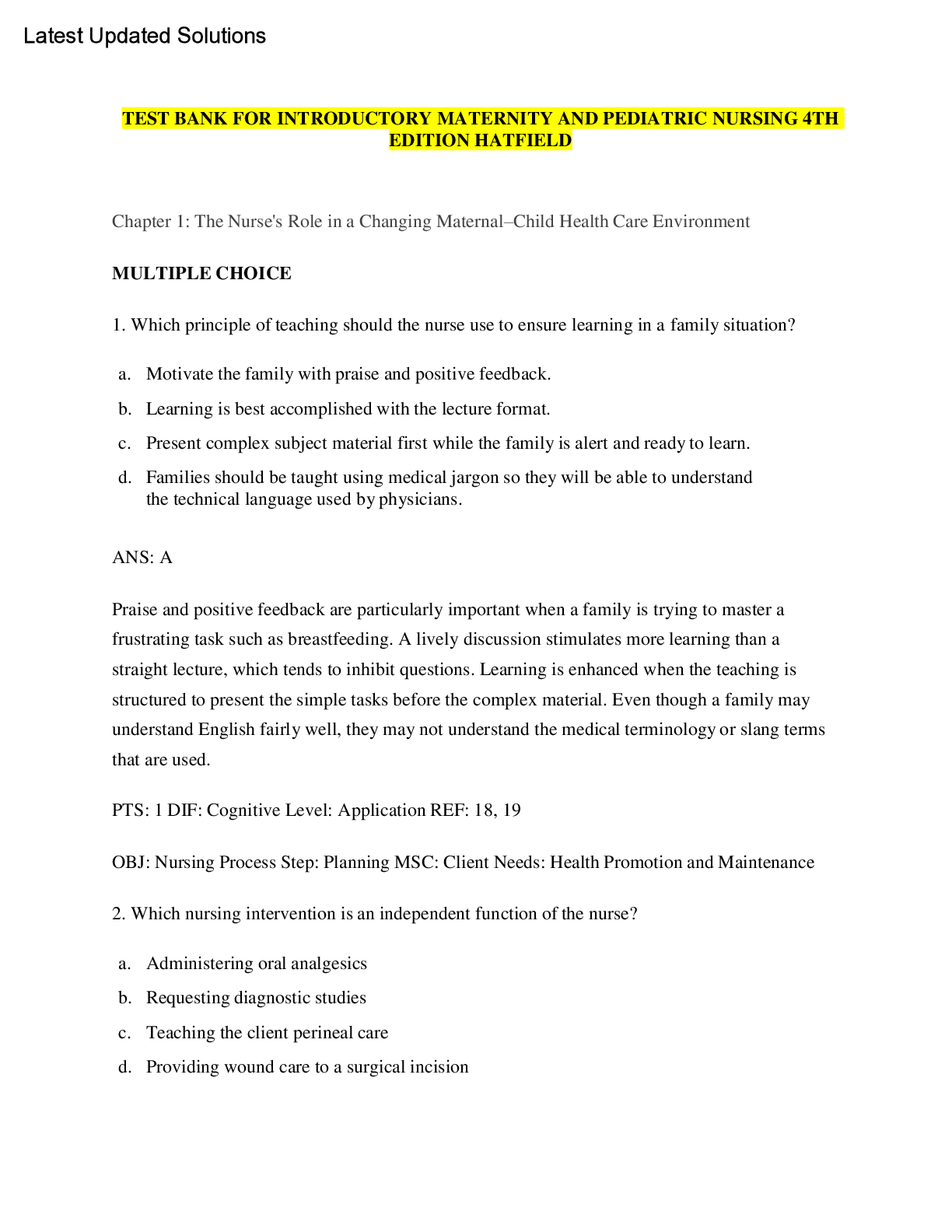



_compressed.png)
.png)
.png)

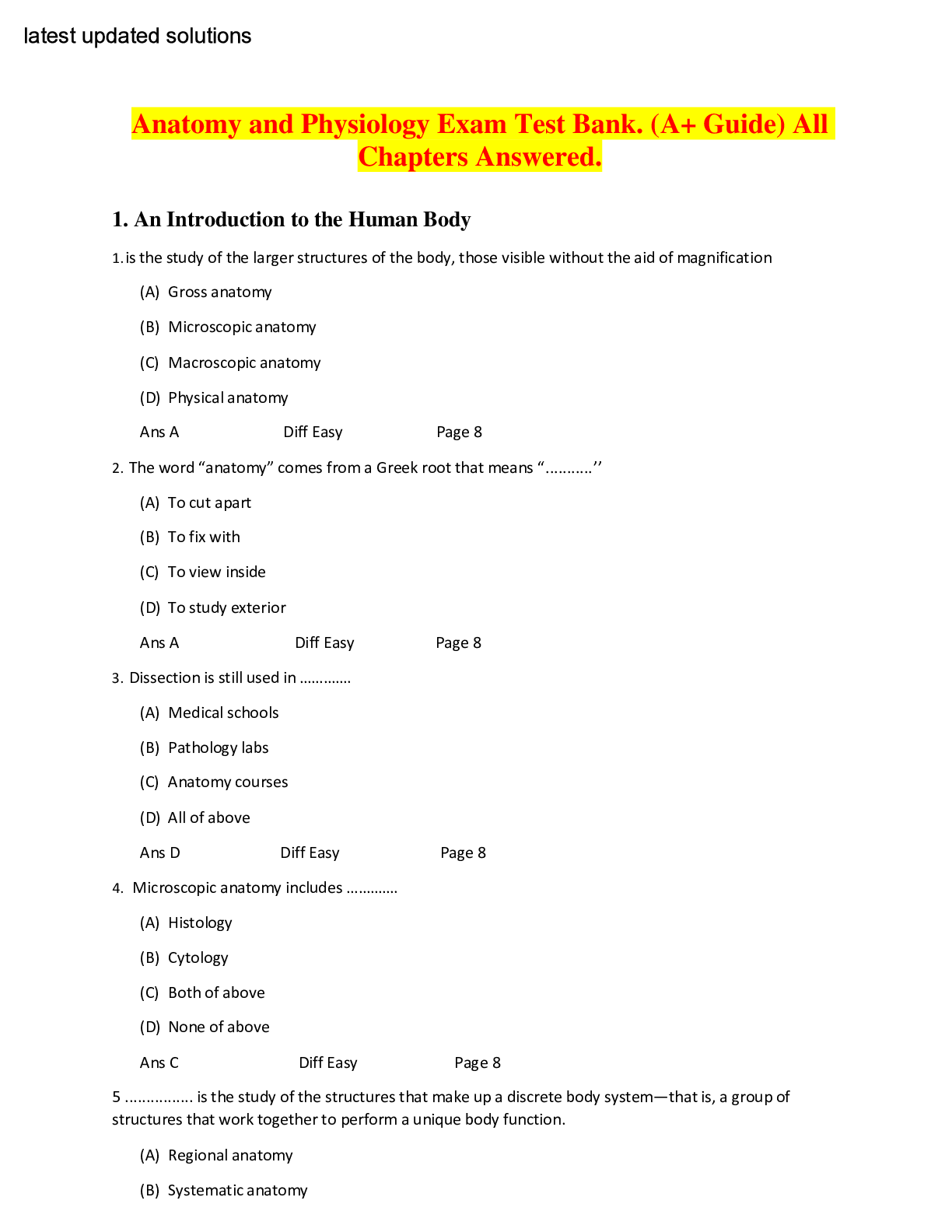
.png)





